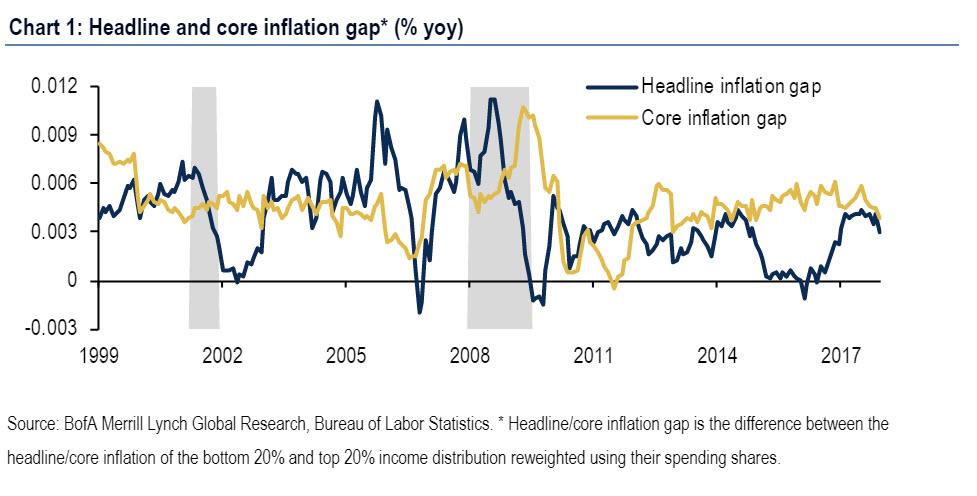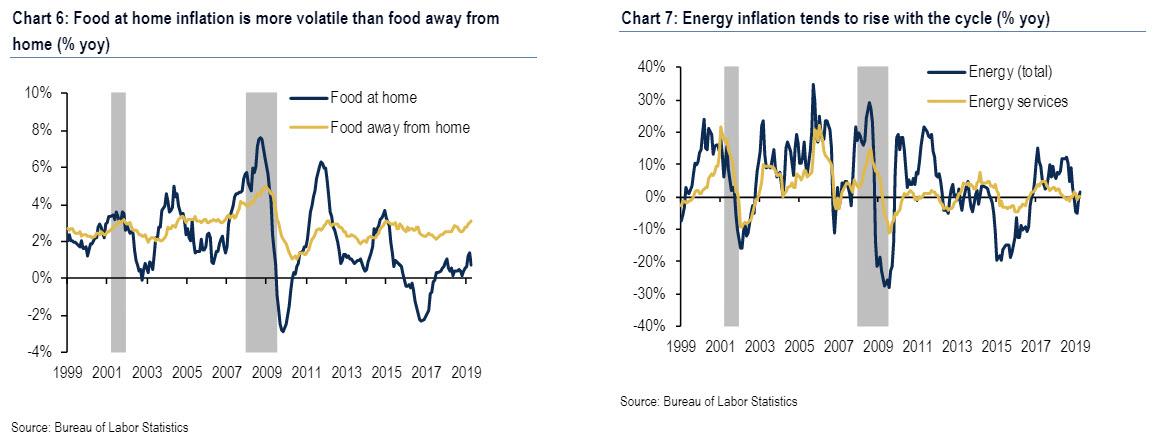Authored by Dagny Taggart via The Organic Prepper blog,
The Food and Drug Administration (FDA) has quietly revealed some troubling information about a class of toxic chemicals that the agency found in significant levels in our food supply.
At a recent scientific conference, the FDA shared the findings of its first broad testing of food for a worrisome class of nonstick, stain-resistant industrial compounds called per- and polyfluoroalykyl substances, or PFAS.
The FDA has not made its findings public yet, but agency researchers discussed the results at a conference held by the Society of Environmental Toxicology and Chemistry last week in Finland. The Environmental Defense Fund and the Environmental Working Group obtained the FDA presentation and provided it to The Associated Press.
Substantial levels of PFAS were found in grocery store meats and seafood and in off-the-shelf chocolate cake:
The levels in nearly half of the meat and fish tested were two or more times over the only currently existing federal advisory level for any kind of the widely used manmade compounds, which are called per- and polyfluoroalykyl substances, or PFAS.
The level in the chocolate cake was higher: more than 250 times the only federal guidelines, which are for some PFAS in drinking water. (source)
PFAS are found everywhere and are nearly impossible to fully avoid.
Per- and polyfluoroalkyl substances (PFAS) are a group of man-made chemicals that includes PFOA, PFOS, GenX, and many other chemicals. PFAS have been manufactured and used in a wide variety of industries around the world, including in the United States since the 1940s. PFOA and PFOS have been the most extensively produced and studied of these chemicals.
As of 2015, neither PFOA or PFOS chemicals are manufactured or used in the U.S., due to health and environmental concerns, according to the rules of the EPA’s stewardship program for the substances, signed in 2006. But both chemicals persist in the environment because they don’t degrade.
PFOA has been detected in the blood of more than 98% of the population in the United States, according to the National Center for Biotechnology Information.
According to the Agency for Toxic Substances and Disease Registry (ATSDR), you can be exposed to PFAS by:
- Drinking contaminated municipal water or private well water
- Eating fish caught from water contaminated by PFAS (PFOS, in particular)
- Accidentally swallowing contaminated soil or dust
- Eating food that was packaged in material that contains PFAS
- Using some consumer products such as non-stick cookware, stain-resistant carpeting, and water repellant clothing.
ATSDR also reports that “research has suggested that exposure to PFOA and PFOS from today’s consumer products is usually low, especially when compared to exposures to contaminated drinking water.”
Some products that may contain PFAS include:
- Some grease-resistant paper, fast food containers/wrappers, microwave popcorn bags, pizza boxes, and candy wrappers
- Nonstick cookware
- Stain-resistant coatings used on carpets, upholstery, and other fabrics
- Water resistant clothing
- Cleaning products
- Personal care products (shampoo, dental floss) and cosmetics (nail polish, eye makeup)
- Paints, varnishes, and sealants
Are the pots and pans you are using to cook made of materials that could make you or your family sick? Check these guides for more on what to avoid and what to use: The Healthy Cookware Shopping Guide (and the toxic things to avoid) and The Healthy Baker’s Shopping Guide to Non-Toxic Ovenware.
Our food and water supplies are contaminated with PFAS.
Diet is thought to be a major source of PFAS exposure for Americans, as explained by the Environmental Working Group:
Studies show that chemicals, including PFAS, can migrate into food from food packaging and food contact substances. PFAS are commonly used in food packaging. Between 2002 and 2016, theFDA approved 19 PFAS for use in food packaging and nearly half of the fast food wrappers collected in 2014 and 2015 had detectable PFAS. But FDA did not test the food for any of the PFAS the agencies allows to be used today.
PFAS can also migrate into fruits, vegetables and grains that are irrigated with PFAS-contaminated water or grown in soils that are contaminted with PFAS.
The use of PFAS-contaminated sewage sludge, concentrated waste from residential and industrial sources, as a fertilizer on farm fields is another way PFAS chemicals find their way into crops grown for food and animal feed. Almost half of the seven million tons of sewage sludge generated in the U.S. every year are applied to land, including on farm fields. Though numerous PFAS chemicals were found in municipal sewage sludge sampled across the country, no federal regulations are in place to require testing for PFAS or prohibiting land applications of sewage sludge that contains PFAS. (source)
To see if the water in your area is known to be contaminated with PFAS, check this interactive map: PFAS Contamination In the U.S.
These chemicals can be devastating to health.
There is evidence that exposure to PFAS can lead to serious adverse human health effects, including cancer, reproductive harm, developmental harm, high cholesterol, damage to the immune system, hormone disruption, weight gain in children and dieting adults, and liver and kidney damage. The presence of PFOA in the blood has been associated with increased cholesterol and uric acid levels, which can lead to kidney stones and gout.
The Environmental Working Group provides more information on PFAS and the FDA study’s findings:
The FDA tested for the presence of 16 PFAS chemicals in foods sampled across eight mid-Atlantic states, including North Carolina, West Virginia, Delaware and Kentucky. The FDA detected PFOS in approximately half of the meat and seafood products; PFPeA in chocolate milk and high levels in chocolate cake with icing; PFBA in pineapple; and PFHxS in sweet potato.
In a related study, the FDA detected the PFAS chemical GenX and highly elevated levels of numerous other PFAS in samples of leafy greens grown within 10 miles of a PFAS production facility. (source)
Some PFAS chemicals are no longer manufactured in the U.S. due to health concerns, but they still turned up at levels ranging from 134 parts per trillion to 865 parts per trillion in tilapia, chicken, turkey, beef, cod, salmon, shrimp, lamb, catfish, and hot dogs. Chocolate cake tested at 17,640 parts per trillion of a kind of PFAS called PFPeA. If you are wondering why the chocolate cake that was testing contained such high levels, here’s a possible explanation from the Environmental Defense Fund:
Chocolate cake with icing is a mixture of many ingredients – outside of flour and oil, no ingredient dominates. So, if the PFPeA comes from only one of ingredient, the levels would have to be extremely high. For that reason, we think it is much more likely that the chemical got into the cake from grease-proofed paper used by the bakery.
From our review of more than 20 notifications submitted by PFAS-manufacturers to FDA describing the use of their PFAS-variant to greaseproof paper, it would not be surprising to find these levels in food. So we think these levels are likely from contact with paper treated with PFPeA.
The disturbing part is that none of the 14 different PFASs currently allowed by FDA to greaseproof paper products are PFPeA. They do not appear to be made from the chemical or expected to break down into it either. Therefore, if the use was intentional rather than simply environmental contamination, then the PFAS manufacturer and company making the treated paper must have self-certified it as GRAS. This is a loophole in the 1958 law establishing the food additive regulatory program that FDA has allowed industry to exploit. EDF and other public health advocates think that this practice violates the Federal Food Drug and Cosmetic Act and are in the middle of a legal challenge to the agency’s rule. The lawsuit was filed two years ago. In April 2018, we asked the court to declare a summary judgment in our favor. (source)
The FDA also found levels of PFAS over 1,000 parts per trillion in leafy green vegetables grown within 10 miles (16 kilometers) of an unspecified eastern U.S. PFAS plant and sold at a farmer’s market, the AP reports. The FDA also previewed test levels for a previously reported instance of PFAS contamination of the food supply in the feed and milk at a dairy near an Air Force base in New Mexico. The FDA called the milk contamination a health concern.
via ZeroHedge News http://bit.ly/2Xw4Fwe Tyler Durden









